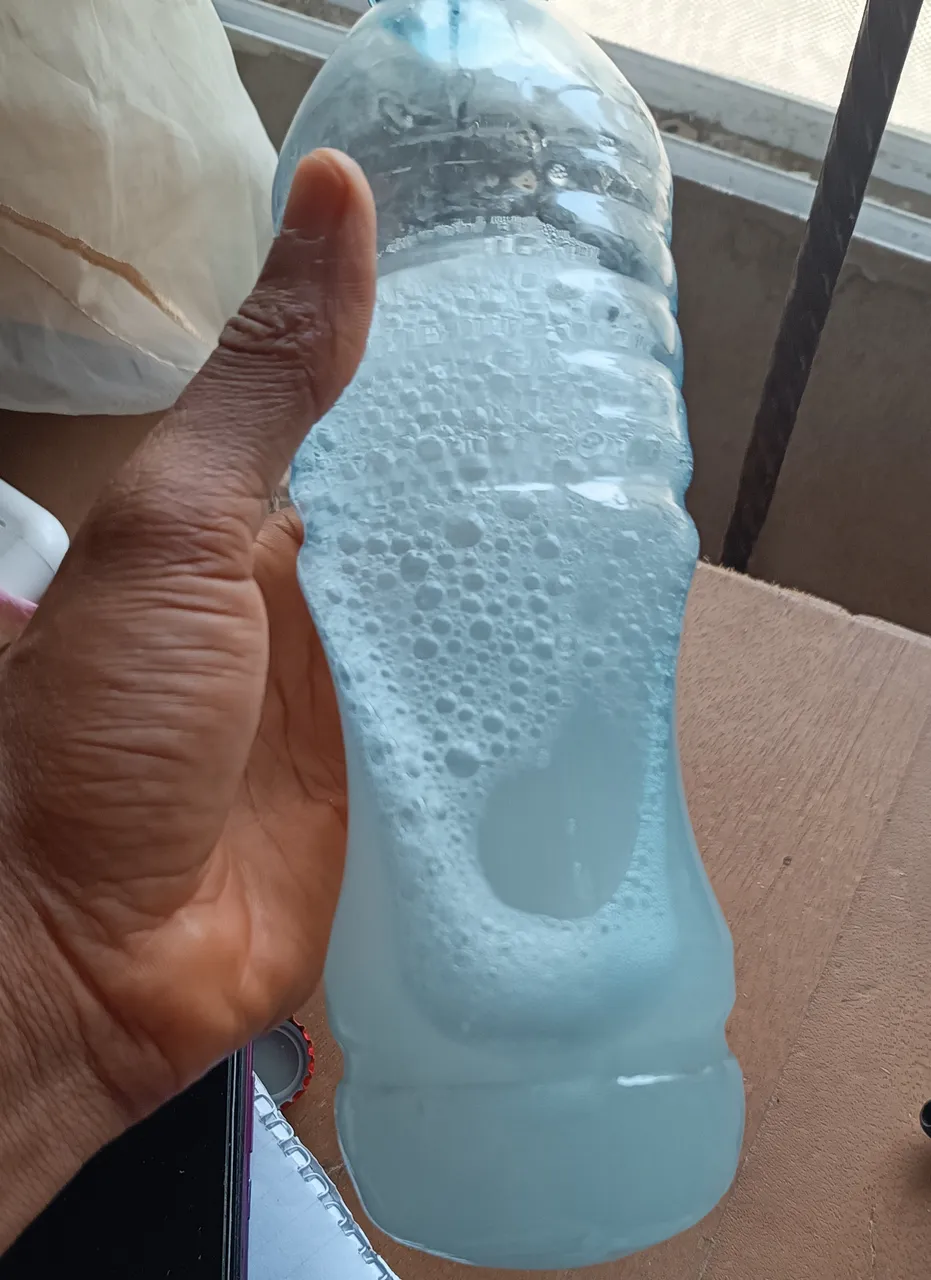Greetings everyone!
It's my first time posting here, and I feel so good finally finding my way here after much procrastination to write about a particular wine.
PALMWINE

I used to think palm wine is widely known, I mean known by everyone, at least in the whole of Africa. But I was shocked when I had a discussion with @humbe, who said she has heard about it but never tasted it or seen it with her eyes.
I've seen palm wine advertised in American movies, which I told her to go and search for where to buy because I'm sure it's available in her current place of residence.
I haven't heard so much about natural drinks, but I think Palm wine is the most popular and richest natural drink in Nigeria and extends to Africa. There's no mixture of many ingredients to form a drink as we see in many other natural drinks; no, this is purely from one source, which is the palm tree.
I know a lot about this drink because I grew up to meet my dad tapping palm wine(though he's no longer into that), which he used to raise some funds for the family Many times. I used to follow him to the bush to hold kegs for him while he collected from the rushing taps from the palm tree.
Did I say I know a lot about it? Yes, I know a lot, but not its alcoholic content because that's what humbe asked me, which I failed to provide an answer for.
Palm wine is known for its natural sweet taste that makes someone want to go for more, especially when it's newly produced. But it loses taste when the producing tree is wearing out, which makes it taste like that of a lime.

Just like I said earlier, it's an alcoholic drink, but the alcohol content is not as strong as those of factory-brewed drinks. Furthermore, it's always at its best when not mixed with water, but also, the content remains good when moderately mixed with water.
The making process:
It's a wine from a palm tree, and we have two types of it: the cut-down palm tree or the living palm tree.
- The cut-down palm tree:
A mature palm tree is located, and it's either cut down by a saw or cutlass or uprooted from the root. The ones that allow a cut down by saw are the trees that are very tall with their length touching the clouds, while the ones that are uprooted are the ones not so high with mighty stems.
Once it's brought down, a cutlass is used to trim the palm fronds' areas, making it very neat to cut out a chunk, making an opening in the fronds' areas, and then, a pipe connected to a keg is installed underneath to rush into. It's left, and within a few hours, the opened area lets the liquids drop through it, which rushes down to the keg. You know the mechanism of having a cut in your leg and blood gushes out from the spot? That's the same mechanism with this.
This is usually done in the bush, so the keg is left in the bush, positioned in a manner that nothing (breeze, animals) will scatter the settings. The following day, the keg must have been filled, which is collected and placed again for another filling.
- The living tree:
This is a bit risky because it means the palm wine tapper has to use a rope to climb to the top of the palm tree, open a part in the palm tree at the palm fronds' area, and install a pipe and a keg to collect the liquids when they drop.
The reason this is not found in most developed countries is that they have fewer palm trees or don't even have any at all, as seen in Africa.
There's a man that taps and sells in my street, and my neighbor who likes it so much often goes there to buy, which he shares with me.
Thanks for reading.
This is my entry to Day 28th of #Marchinleo prompt.
Feel free to read about the prompt here and join us.
All photos are mine